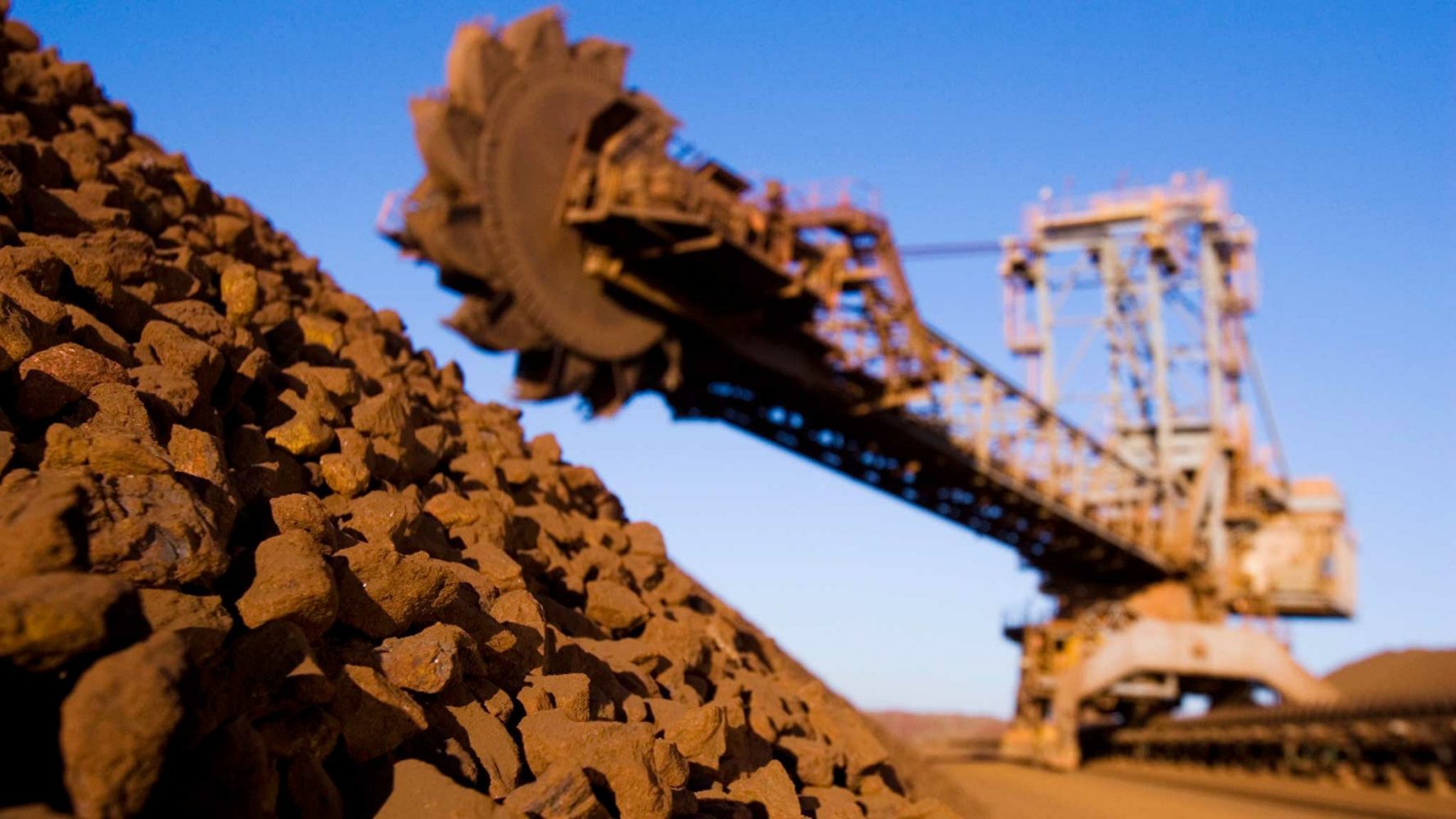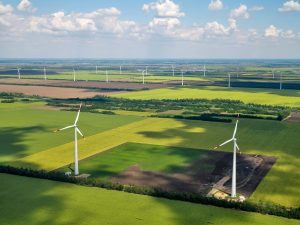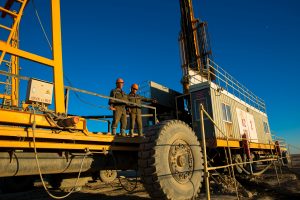
Metals: Shortage Foretold
back to contentsThe International Energy Agency (IEA) has published a report entitled ‘The Role of Critical Minerals in Clean Energy Transition.’ The report highlights that the rapid deployment of clean energy technologies might cause disruptions in the supply of certain non-ferrous, rare-earth and precious metals, drive up their prices, and thus slow down the growth of renewable energy generation. In this respect, deployment of nuclear energy is less risky given its low demand for these metals. And this is yet another argument for a larger share of nuclear energy in the global energy mix.
Energy transition and deployment of clean energy technologies stimulate demand for metals. “A typical electric car requires six times the mineral inputs of a conventional car, and an onshore wind plant requires nine times more mineral resources than a gas-fired power plant,” these are the figures quoted in the report. According to the authors of the report, the renewable energy industry, particularly electricity grids, energy storage systems and electric vehicles, will account for 40 % of the total demand for copper and rare-earth metals, 60 % for nickel and cobalt, and almost 90 % for lithium.
There is a risk, however, that supply of metals will lag behind demand, “The prospect of a rapid increase in demand for critical minerals — well above anything seen previously in most cases — raises huge questions about the availability and reliability of supply.”
Iron ore out of focus
The authors of the report compare demand for metals from different types of energy generation, but only those metals that are used in capital construction and production of equipment. Metals required during operation, such as uranium, are not taken into account. “Our analysis focuses on the requirements for building a plant (or making equipment),” the report says.
Experts chose to analyze the supply of non-ferrous, rare-earth and precious metals. Is this reasonable? The report ignores, for reasons unknown, everything related to steels and alloying metals and thus to iron ore. Steel, however, is used to make transmission towers, reinforcement structures in hydropower dams, and electrical equipment. According to the United States Geological Survey, steel accounts for 71 % to 79 % of the total weight of a wind turbine. Another 5 % to 17 % is a share of iron and cast iron. That means the share of iron ore derivatives in a wind turbine can be as large as 96 %. In a nuclear power plant, the share of steel and other iron ore derivatives is also large as they are used in the structures and equipment of the plant.
It is quite likely that the IEA does not consider iron supplies to be at risk. Thankfully, iron ore is produced and offered for sale by many mining majors in the world, but the price of iron ore is one of the most volatile among the prices of minerals. Volatility and price growth constitute another risk that is mentioned in the IEA report as the second most significant to supply disruptions, “In the past, strains on the supply-demand balance for different minerals have prompted additional investment and measures to moderate or substitute demand. But these responses have come with time lags and have been accompanied by considerable price volatility. Similar episodes in the future could delay clean energy transitions and push up their cost.”
 In March 2021, iron ore was priced at $88 per metric ton and reached $230 as soon as May. The output of ore in 2020 amounted to 2.2 billion tons. The price of steel may also change dramatically. In China, the price of reinforcement steel bars grew from $660 per ton early this year to $865 per ton in early May. “These prices are record high — they exceed the peaks reached during the previous market booms,” Interfax quoted Clarksons Platou Securities as saying at that time. Two weeks later, on May 24, reports came in that the iron ore prices plummeted by 20 % from the peak in May. The decline was caused by an announcement made by China’s National Development and Reform Commission in late May that it plans to fight monopolies in the commodities markets, price manipulations, speculative activity, dissemination of false information, and accumulation of excessive reserves.
In March 2021, iron ore was priced at $88 per metric ton and reached $230 as soon as May. The output of ore in 2020 amounted to 2.2 billion tons. The price of steel may also change dramatically. In China, the price of reinforcement steel bars grew from $660 per ton early this year to $865 per ton in early May. “These prices are record high — they exceed the peaks reached during the previous market booms,” Interfax quoted Clarksons Platou Securities as saying at that time. Two weeks later, on May 24, reports came in that the iron ore prices plummeted by 20 % from the peak in May. The decline was caused by an announcement made by China’s National Development and Reform Commission in late May that it plans to fight monopolies in the commodities markets, price manipulations, speculative activity, dissemination of false information, and accumulation of excessive reserves.
This means that the iron ore and steel prices are much more significant for the power industry than the prices of non-ferrous, precious and, even more so, rare-earth metals.
Nuclear energy:
reliable and cost-efficient
Offshore wind turbines use most of non-ferrous and rare-earth metals as compared to other technology, nearly 16 tons per megawatt of installed capacity, IEA experts say. Copper and zinc have the largest shares in this amount. Onshore wind turbines come second, with more than 10 tons of non-ferrous and rare-earth metals needed per megawatt. Solar panels are in the third place (7 tons of metals per megawatt). Nuclear energy consumes the smallest amount of those metals (less than 6 tons per MW) among the other clean energy technologies — only coal-fired and gas-fired power plants consume less.
The authors of the report assessed the significance of certain metals for the nuclear industry as medium and low. Only hydropower is as sensitive to them as nuclear power. The other clean energy technologies are much more sensitive and depend heavily on one or two metals. Electrical vehicles and storage batteries are the most sensitive. According to the IEA, those two segments are badly in need of copper, cobalt, nickel, lithium, rare-earth metals, and aluminum, or six out of nine metals in consideration. This means the risk of disruptions in supply and, consequently, production increases sixfold.
 IEA experts forecast in their Stated Policies Scenario (STEPS) that demand of the nuclear industry for non-ferrous and other metals will grow globally by less than 10,000 tons, from 50,000 tons in 2020 to less than 60,000 tons in 2040, which is even somewhat lower than in 2030. In its Sustainable Development Scenario (SDS), the IEA forecasts the annual demand might be a little above 80,000 tons, “In the SDS, average annual mineral demand from nuclear power between 2031 and 2040 grows by around 60 % compared to 2020 levels, reaching 82 kt. It is dominated by chromium (42 %), copper (28 %) and nickel (25 %). Yttrium demand in 2040 is around 7.7 tons, or around 0.0015 % of current global reserves.” STEPS is a scenario that follows the existing (stated) government policies. SDS assumes an accelerated transition to clean energy sources in different industries.
IEA experts forecast in their Stated Policies Scenario (STEPS) that demand of the nuclear industry for non-ferrous and other metals will grow globally by less than 10,000 tons, from 50,000 tons in 2020 to less than 60,000 tons in 2040, which is even somewhat lower than in 2030. In its Sustainable Development Scenario (SDS), the IEA forecasts the annual demand might be a little above 80,000 tons, “In the SDS, average annual mineral demand from nuclear power between 2031 and 2040 grows by around 60 % compared to 2020 levels, reaching 82 kt. It is dominated by chromium (42 %), copper (28 %) and nickel (25 %). Yttrium demand in 2040 is around 7.7 tons, or around 0.0015 % of current global reserves.” STEPS is a scenario that follows the existing (stated) government policies. SDS assumes an accelerated transition to clean energy sources in different industries.
“Along with hydropower, nuclear is one of the low-carbon technologies with the lowest mineral intensity. Key mineral needs include chromium (2 190 kg/MW in 2019), copper (1 470 kg/MW), nickel (1 300 kg/MW), hafnium (0.5 kg/MW) and yttrium (0.5 kg/MW) (EC JRC, 2011),” the report says.
In other words, the nuclear industry will not stimulate an expected hike in the demand for metals and, therefore, will not contribute to an increase in prices or supply disruptions.
What is more, the long investment cycle for nuclear power plants and equipment makes it possible to predict demand for metals on at least a one-year horizon. As a result, it is possible to minimize the risk of supply disruptions and price growth by making contracts in advance.
The IEA data, therefore, allows us to conclude that nuclear energy is one of the most secure sources of clean energy in terms of supply and price fluctuations.
Green price spiral
IEA experts’ concerns with the price and supply stability on the back of production growth in the clean energy segment have been voiced amid demands addressed to mining companies to reduce the carbon footprint. In this situation, they become suppliers of raw materials for the clean energy industry and consumers of clean energy. By making their production ‘greener’, they stimulate the same demand they are meant to satisfy.
One of the conclusions made in the IEA report is as follows, “Rapid, orderly energy transitions require strong growth in investment in mineral supplies to keep up with the pace of demand growth. Policy makers can take a variety of actions to encourage new supply projects: the most important is to provide clear and strong signals about energy transitions.”
 But what will happen when the requirement for ‘strong growth in investment in mineral supplies’ is met? Mining companies will acquire new facilities and increase their output. They will need much money as each new construction will be a capital-intensive project because the existing mines with high ore grades and extensive infrastructure are almost depleted or close to depletion. New production facilities stimulate demand for more energy and transport, which are to be clean and, therefore, more expensive than conventional ones. All those additional costs will be weighed against investment attractiveness of new projects and have an indirect influence, through supply and demand, on market (if any) and contract prices of commodities. Even if new construction projects are launched, their costs will be higher. And because the number of projects able to survive through a period of low prices will decrease, the lower threshold of metal prices will be higher to prevent shortage and a new price hike.
But what will happen when the requirement for ‘strong growth in investment in mineral supplies’ is met? Mining companies will acquire new facilities and increase their output. They will need much money as each new construction will be a capital-intensive project because the existing mines with high ore grades and extensive infrastructure are almost depleted or close to depletion. New production facilities stimulate demand for more energy and transport, which are to be clean and, therefore, more expensive than conventional ones. All those additional costs will be weighed against investment attractiveness of new projects and have an indirect influence, through supply and demand, on market (if any) and contract prices of commodities. Even if new construction projects are launched, their costs will be higher. And because the number of projects able to survive through a period of low prices will decrease, the lower threshold of metal prices will be higher to prevent shortage and a new price hike.
The growth of metal prices translates itself into growing costs in every metal-intensive industry, including clean energy generation, which then drives production costs in the metal and mining industry, and then the spiral — inflation spiral — makes another turn. And this is a moderate scenario that does not account for ‘black swans’, or events that are hard-to-predict, totally unexpected and consequential. Here is a non-exhaustive list of the factors that have influenced mining companies’ prices, supplies and plans in recent years: a lengthy financial crisis, strikes at mines, coups, coronavirus pandemic, customs and antimonopoly regulation, deployment of more cost-efficient mining and extraction technology that makes the previously infeasible deposits viable options. And, of course, this list would be incomplete without the low-carbon requirements for supplies.
The result is sharp increases and declines in prices. A good example is the price of copper that fell to less than $4,750 per ton and soared to more than $7,880 per ton in 2020. In 2021, it came close to $10,400 per ton.
 In this sense, nuclear energy is an epitome of stability as it can guarantee consumers, including mining companies, stable pricing for the entire service life of a power unit, now believed to be able to reach one hundred years. This is a time that exceeds the development period of a majority of current non-ferrous and rare-earth metal deposits. Besides, nuclear power plants guarantee a reliable supply of electricity that does not depend on the vagaries of weather or climate changes as they are capable of operating in any climatic zone, from the tropics to the Arctic.
In this sense, nuclear energy is an epitome of stability as it can guarantee consumers, including mining companies, stable pricing for the entire service life of a power unit, now believed to be able to reach one hundred years. This is a time that exceeds the development period of a majority of current non-ferrous and rare-earth metal deposits. Besides, nuclear power plants guarantee a reliable supply of electricity that does not depend on the vagaries of weather or climate changes as they are capable of operating in any climatic zone, from the tropics to the Arctic.
That means nuclear energy can support mining operations without driving up the price of metals. Mines powered by nuclear power plants will have a flat electricity component of the production cost for decades and up to a century.
Russia already has examples of a symbiotic relationship between nuclear and mining. In early June, a power transmission line connecting Peschanka, a large copper and gold deposit, and Kekura, a smaller gold deposit, with the Bilibino Nuclear Power Plant based in the same-name Arctic city (Chukotka Autonomous Region). Electricity from the nuclear power plant is needed for construction of a mining and processing plant (Baimsky GOK) at Peschanka. The cooperation between Rosatom and Peschanka owner KAZ Minerals (Kazakhstan) might be continued as the parties discuss the possibility of building several floating power plants with RITM‑200 nuclear reactors for Baimsky GOK.
Moderate regulation
IEA analysts call national governments to take action to prevent a rise of metal prices and shortage of supply: “Policy makers need to explore a range of measures to improve the resilience of supply chains for different minerals, develop response capabilities to potential supply disruptions and enhance market transparency. Measures can include regular market assessments and stress tests, as well as voluntary strategic stockpiles in some instances.” But price mechanisms that the governments have are not many. The commercial metal market has a huge size and international significance. Government regulation or sanctions even against a single large manufacturer of copper, aluminum or nickel will affect an enormous number of market players. The market will look for any, including regulatory, mechanisms to improve the situation.
As the Chinese practice shows, it is true that the government threatening to punish for speculative activity in the market might cool down prices. By contrast, procurements for national reserves have only a limited effect. Even in the USA, the world’s largest economy, the 2022 budget does not allocate money to buy uranium from American uranium companies for the national uranium reserve, which was established by Trump’s administration to support local producers. And no government funds will be enough to make any sizable reserves of copper or aluminum.
Another proposal made by IEA experts is to support geological surveys and prospecting: “Resource-owning governments can support new project development by reinforcing national geological surveys, streamlining permitting procedures to shorten lead times, providing financing support to de-risk projects, and raising public awareness of the contribution that such projects play in the transformation of the energy sector.” No doubt these measures are useful and important, but surveying is not what mining companies spend most of their money on — it is construction of mines. So, if we talk about government support for mining companies, we should first talk about infrastructure development through co-financing of roads, power transmission lines and substations, electricity subsidies to mining companies, and co-financing of new generation capacity. Such mechanisms of support are considered by the Russian government. One of the potential targets might be Baimsky GOK we mentioned above.




